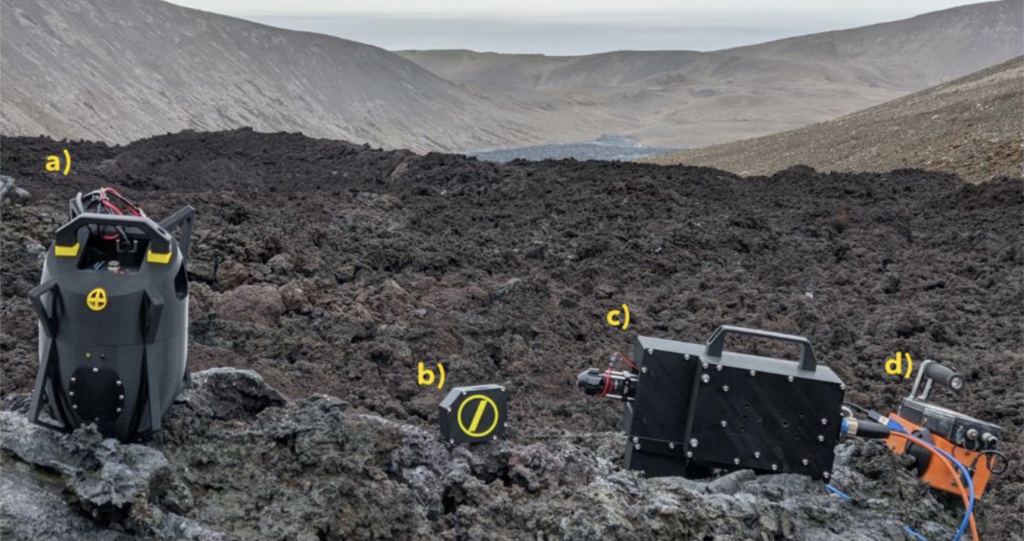20-EPN2-122: IceSCOPE – Iceland Subsurface Classification of Organics, PAHs, and Elements
Visit by Pablo Sobron and Kirby Simon, Impossible Sensing (US) to TA1 – Iceland Field Sites, MATIS
Dates of visit: 15-18 May 2022
The recent volcanic eruption at Geldingadalir in 2021 serves as an ideal analog for studying the biogeochemistry of volcanism on other planetary bodies with active (e.g. Io) and/or extinct (e.g. Mars) volcanic systems. Along with this, comparative analog studies between a recently-active volcano like Geldingadalir and old lava fields present throughout Iceland will provide meaningful context in understanding (1) the conditions necessary for microorganisms to colonise lifeless or barren environments and (2) how life transforms the environment, which has implications in the search for extant or extinct life in our solar system.
Our technology demonstration focused on the deployment of ruggedised, handheld spectroscopic tools for surveying the biology and chemistry present in the lava fields. We deployed a gamma ray spectrometer and laser induced breakdown spectroscopy (LIBS) instrument to assess the elemental composition of the natural samples, an ultraviolet (UV) fluorescence imager to investigate organic signatures on the rock surfaces, and a near-infrared (NIR) reflectance spectrometer for determining mineralogy and molecular bonding structures.
We collected co-registered spectroscopic measurements on >5 samples throughout the Geldingadalir lava field and at a control field nearby, and surveyed >10 additional surface and subsurface features throughout the lava field with one or more of the instruments. At the conclusion of the work, we had collected >1000 UV fluorescence images, 10s of NIR reflectance and LIBS spectra, and >10 gamma ray measurements.

Highlights of the project: Demonstration of a scientific payload for astrobiological research in volcanic environments and new understanding of microbial colonisation of fresh basalt.
Read the full scientifc report, with kind permission from Pablo Sobron and Kirby Simon.

